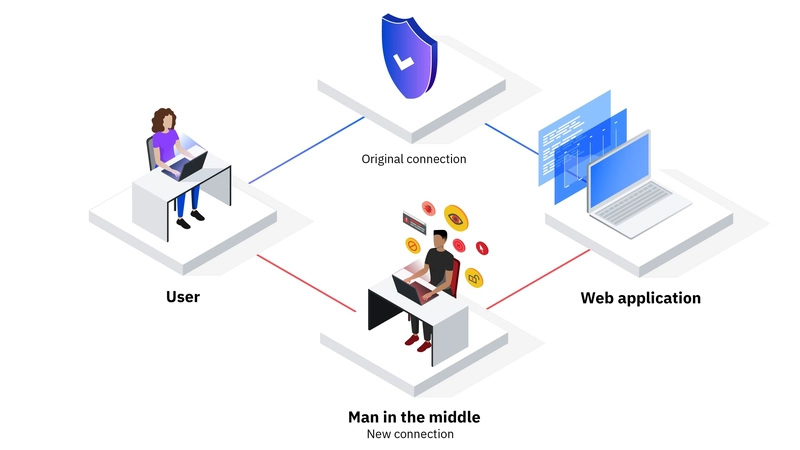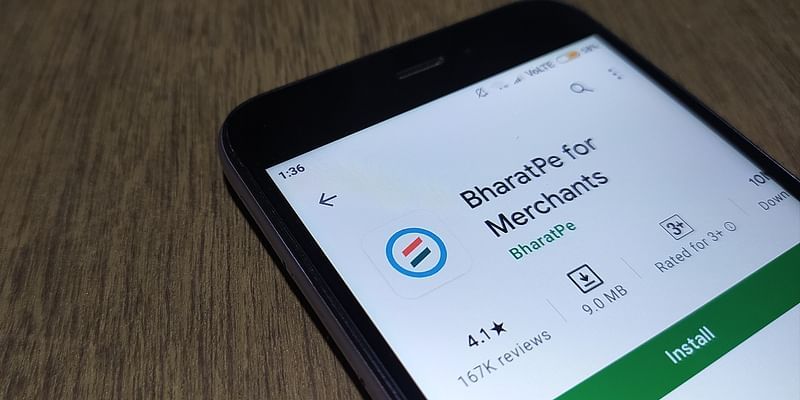How Hackers Intercept Your Messages: The Silent Cyber Threat You Need to Know
Man-In-The Middle: A Man-in-the-Middle (MITM) attack is a cyberattack where a hacker secretly intercepts communication between two parties, such as a user and a website, without their knowledge. The attacker can eavesdrop, steal sensitive information, or even manipulate the data being exchanged. This type of attack is especially dangerous when dealing with financial transactions, login credentials, and personal data. Here's How It Work: Interception The attacker places themselves between the two communicating parties, often by exploiting weak or unsecured networks. This can be done through techniques like rogue Wi-Fi hotspots or DNS spoofing. Eavesdropping Once in position, the attacker can silently monitor and record the communication. This allows them to capture sensitive information such as usernames, passwords, credit card details, and private messages. Manipulation In some cases, the hacker doesn’t just listen—they modify the data being sent. This could involve redirecting the victim to a fake website, injecting malicious code, or altering financial transactions. Here's The Framework That For Understanding Quickly! Some Common Type Of MITM: Fake Wi-Fi Hotspots Hackers set up robust public Wi-Fi networks that appear legitimate (e.g., “Free Airport Wi-Fi”). When users connect, the attacker can monitor all unencrypted traffic and steal sensitive data. DNS Spoofing In this method, the attacker tricks your device into visiting a fake website instead of the real one. For example, you think you're logging into "yourbank.com," but you're actually on a fraudulent site that looks identical, designed to steal your credentials. HTTPS Downgrade (SSL Stripping) Some attackers force your connection to switch from secure HTTPS to insecure HTTP, making it easier for them to intercept and read your data. Always check for the lock icon in the browser’s address bar. Session Hijacking (Cookies) Here, the hacker steals session cookies (small pieces of data that keep you logged into websites). With these cookies, they can impersonate you and gain access to your accounts without needing your password. (MITM) Real-World Attack: In 2024, security researchers reported that a vulnerability enables hackers to launch an MITM attack to unlock and steal Tesla vehicles.1 Using a spoofed wifi hotspot at a Tesla charging station, an attacker could harvest the account credentials of a Tesla owner. The attacker could then add a new “phone key” that unlocks and starts the vehicle without the knowledge of the vehicle owner, according to the researchers. Robust Security Preventions: 1. Use HTTPS websites: Always check for the lock icon in the address bar before entering sensitive information. If a site doesn’t have it, avoid entering personal details. 2. Avoid public Wi-Fi:** Hackers often exploit unsecured networks. If you must use one, connect through a VPN (Virtual Private Network) to encrypt your data. 3. Enable Two-Factor Authentication (2FA): Even if an attacker steals your password, they won’t be able to log in without the second authentication step. 4. Keep your software updated: Security patches help fix vulnerabilities that hackers exploit in MITM attacks. 5. Use strong, unique passwords: A password manager can help generate and store secure passwords for each site. 6. Be cautious of suspicious links and emails: Phishing emails often contain fake login pages that steal your credentials. Always verify before clicking. Final Thoughts: Man-in-the-Middle attacks are like digital pickpocketing—they’re sneaky, dangerous, and hard to notice. But by staying cautious and following these security steps, you can make yourself a much harder target. Your data is valuable treat it like your wallet. If you wouldn’t hand your wallet to a stranger, don’t hand your information to an unsecured connection!

Man-In-The Middle:
A Man-in-the-Middle (MITM) attack is a cyberattack where a hacker secretly intercepts communication between two parties, such as a user and a website, without their knowledge. The attacker can eavesdrop, steal sensitive information, or even manipulate the data being exchanged. This type of attack is especially dangerous when dealing with financial transactions, login credentials, and personal data.
Here's How It Work:
Interception
The attacker places themselves between the two communicating parties, often by exploiting weak or unsecured networks. This can be done through techniques like rogue Wi-Fi hotspots or DNS spoofing.Eavesdropping
Once in position, the attacker can silently monitor and record the communication. This allows them to capture sensitive information such as usernames, passwords, credit card details, and private messages.Manipulation
In some cases, the hacker doesn’t just listen—they modify the data being sent. This could involve redirecting the victim to a fake website, injecting malicious code, or altering financial transactions.
Here's The Framework That For Understanding Quickly!

Some Common Type Of MITM:
Fake Wi-Fi Hotspots
Hackers set up robust public Wi-Fi networks that appear legitimate (e.g., “Free Airport Wi-Fi”). When users connect, the attacker can monitor all unencrypted traffic and steal sensitive data.DNS Spoofing
In this method, the attacker tricks your device into visiting a fake website instead of the real one. For example, you think you're logging into "yourbank.com," but you're actually on a fraudulent site that looks identical, designed to steal your credentials.HTTPS Downgrade (SSL Stripping)
Some attackers force your connection to switch from secure HTTPS to insecure HTTP, making it easier for them to intercept and read your data. Always check for the lock icon in the browser’s address bar.Session Hijacking (Cookies)
Here, the hacker steals session cookies (small pieces of data that keep you logged into websites). With these cookies, they can impersonate you and gain access to your accounts without needing your password.
(MITM) Real-World Attack:
In 2024, security researchers reported that a vulnerability enables hackers to launch an MITM attack to unlock and steal Tesla vehicles.1
Using a spoofed wifi hotspot at a Tesla charging station, an attacker could harvest the account credentials of a Tesla owner. The attacker could then add a new “phone key” that unlocks and starts the vehicle without the knowledge of the vehicle owner, according to the researchers.
Robust Security Preventions:
1. Use HTTPS websites: Always check for the lock icon in the address bar before entering sensitive information. If a site doesn’t have it, avoid entering personal details.
2. Avoid public Wi-Fi:** Hackers often exploit unsecured networks. If you must use one, connect through a VPN (Virtual Private Network) to encrypt your data.
3. Enable Two-Factor Authentication (2FA): Even if an attacker steals your password, they won’t be able to log in without the second authentication step.
4. Keep your software updated: Security patches help fix vulnerabilities that hackers exploit in MITM attacks.
5. Use strong, unique passwords: A password manager can help generate and store secure passwords for each site.
6. Be cautious of suspicious links and emails: Phishing emails often contain fake login pages that steal your credentials. Always verify before clicking.
Final Thoughts:
Man-in-the-Middle attacks are like digital pickpocketing—they’re sneaky, dangerous, and hard to notice. But by staying cautious and following these security steps, you can make yourself a much harder target.
Your data is valuable treat it like your wallet. If you wouldn’t hand your wallet to a stranger, don’t hand your information to an unsecured connection!








































































































































































![[The AI Show Episode 143]: ChatGPT Revenue Surge, New AGI Timelines, Amazon’s AI Agent, Claude for Education, Model Context Protocol & LLMs Pass the Turing Test](https://www.marketingaiinstitute.com/hubfs/ep%20143%20cover.png)



































































































































![From drop-out to software architect with Jason Lengstorf [Podcast #167]](https://cdn.hashnode.com/res/hashnode/image/upload/v1743796461357/f3d19cd7-e6f5-4d7c-8bfc-eb974bc8da68.png?#)










































































































.jpg?#)




























_ArtemisDiana_Alamy.jpg?#)













































































-xl.jpg)












![Yes, the Gemini icon is now bigger and brighter on Android [U]](https://i0.wp.com/9to5google.com/wp-content/uploads/sites/4/2025/02/Gemini-on-Galaxy-S25.jpg?resize=1200%2C628&quality=82&strip=all&ssl=1)











![Apple Rushes Five Planes of iPhones to US Ahead of New Tariffs [Report]](https://www.iclarified.com/images/news/96967/96967/96967-640.jpg)
![Apple Vision Pro 2 Allegedly in Production Ahead of 2025 Launch [Rumor]](https://www.iclarified.com/images/news/96965/96965/96965-640.jpg)

































































































































